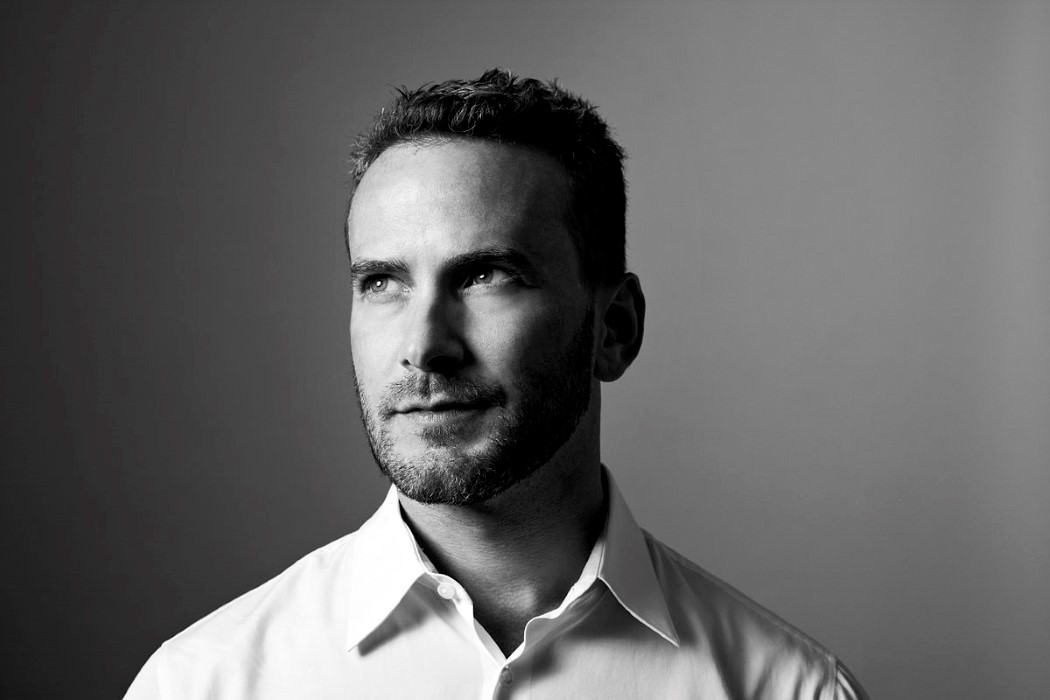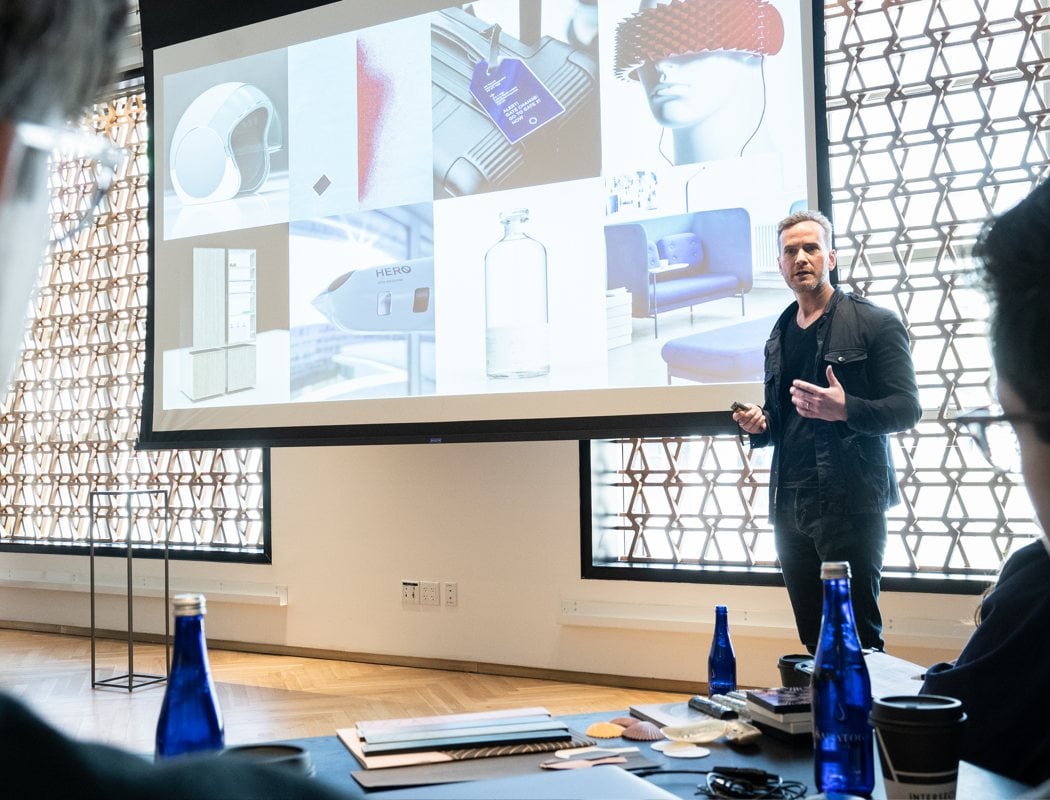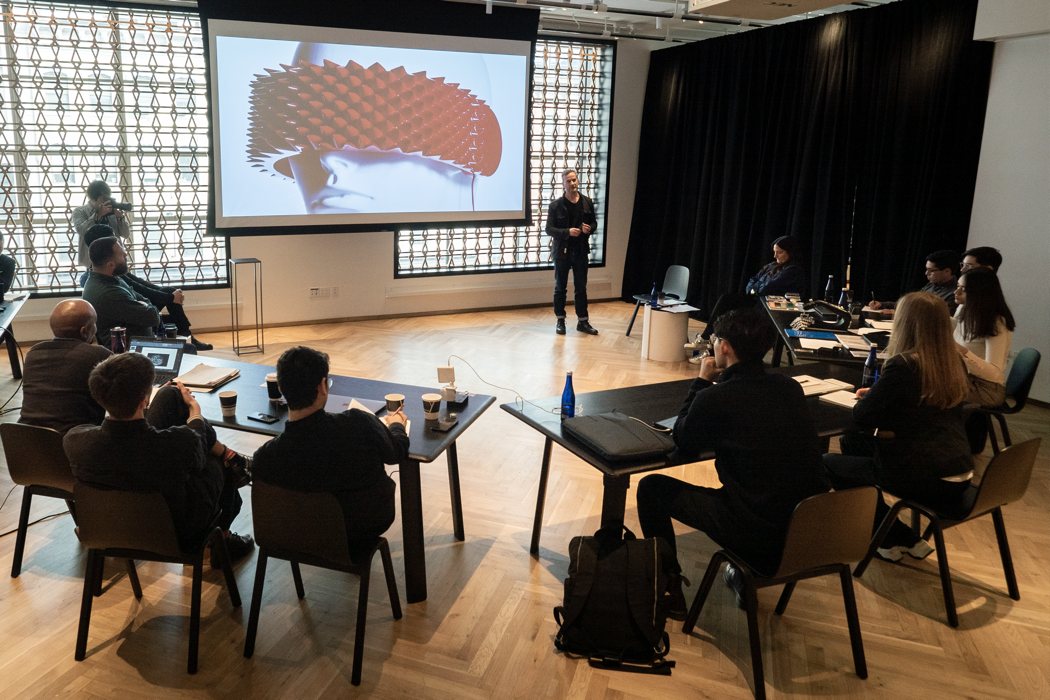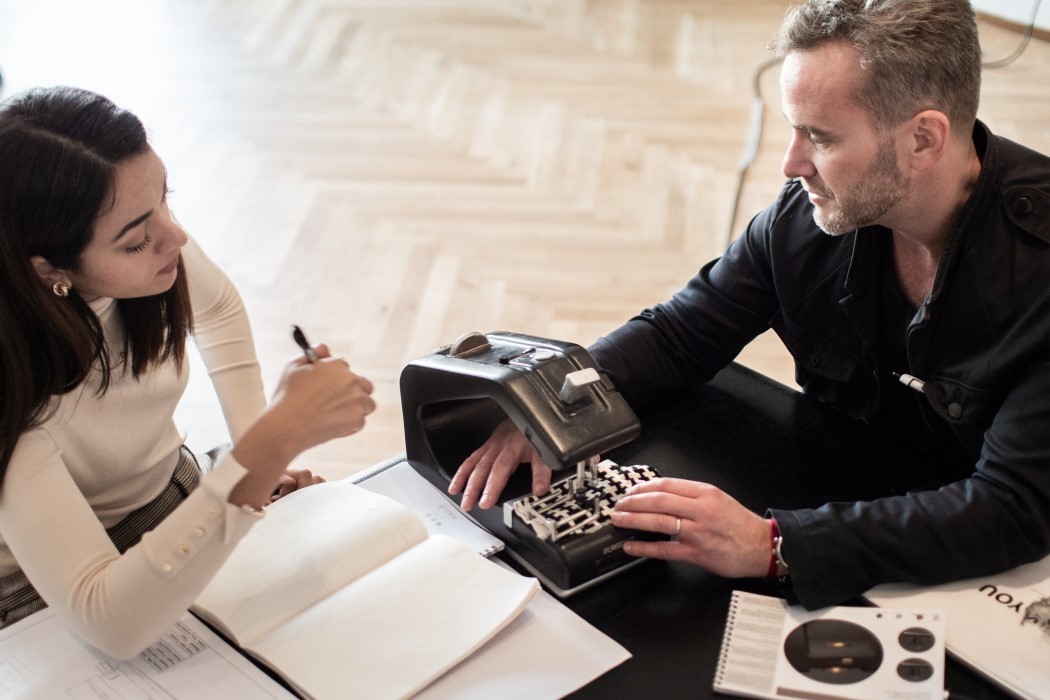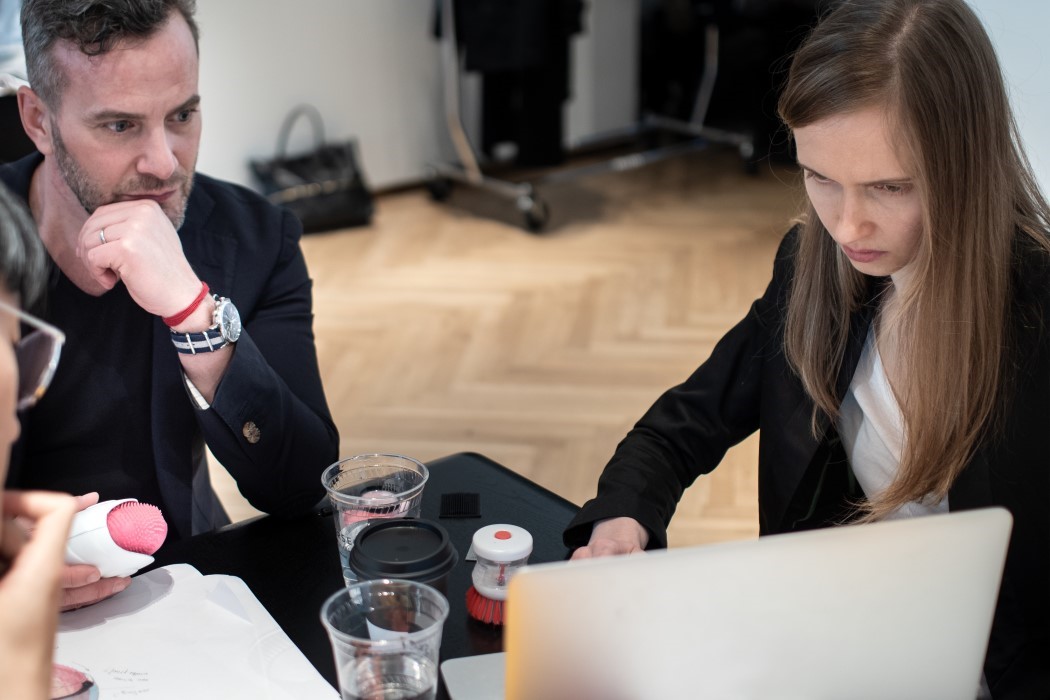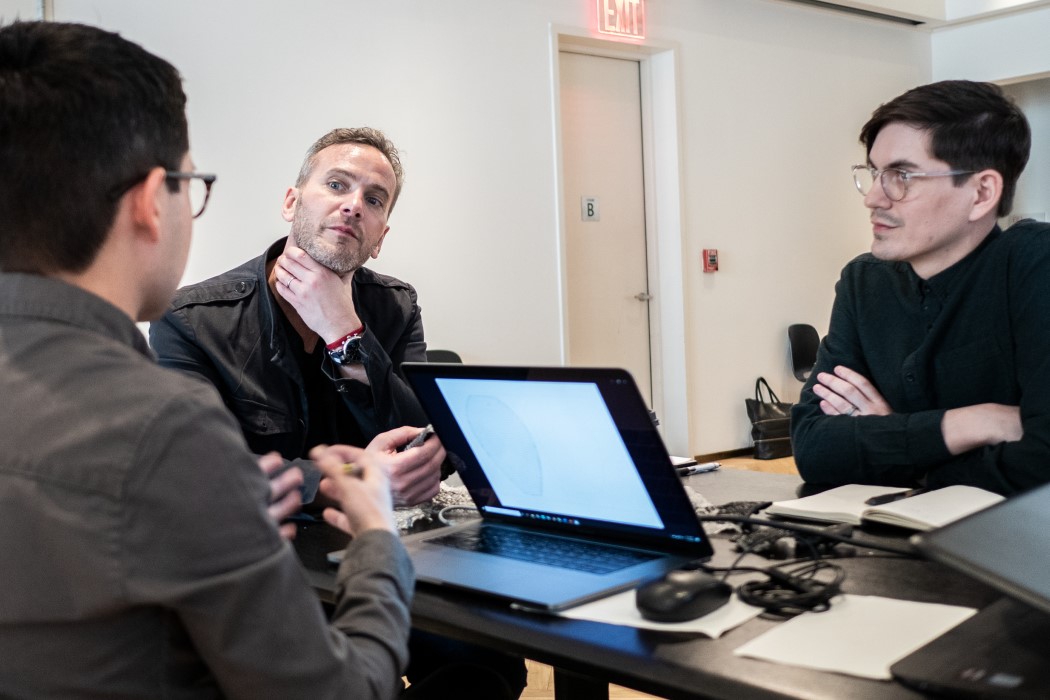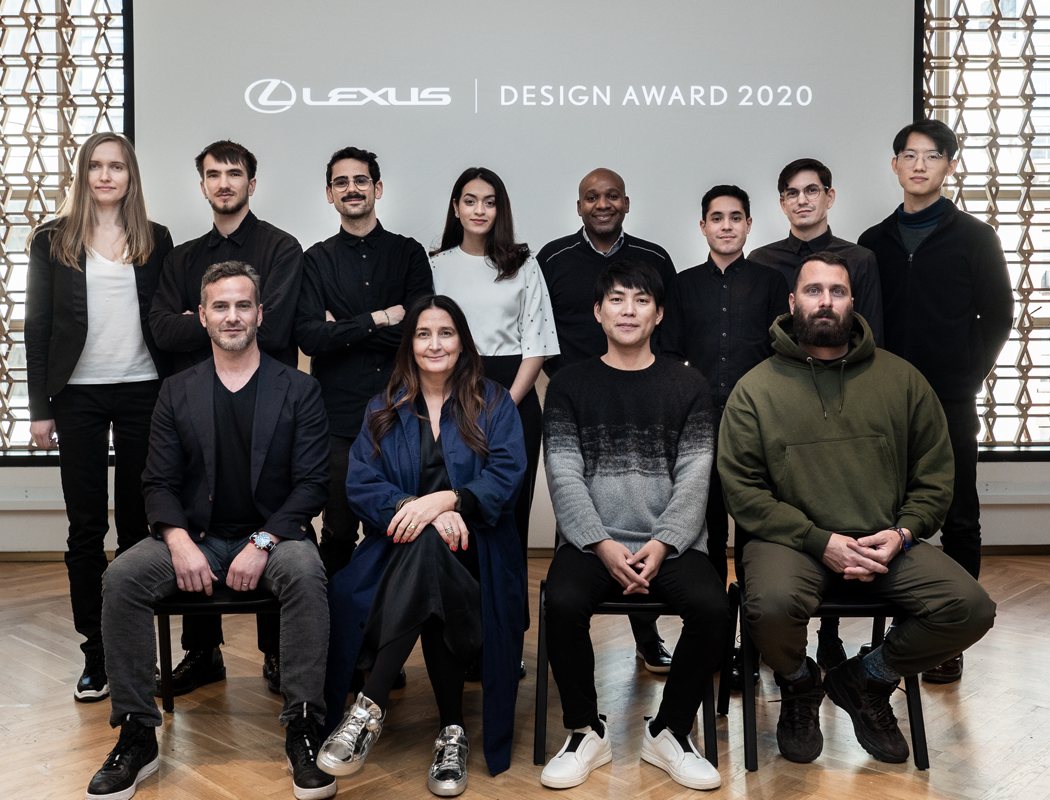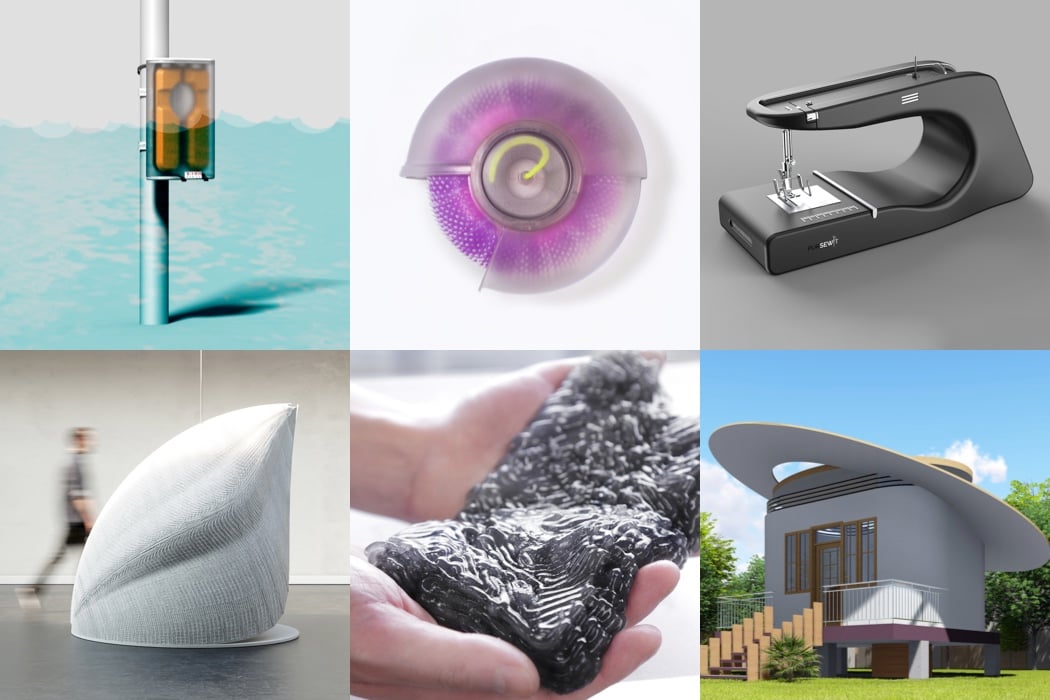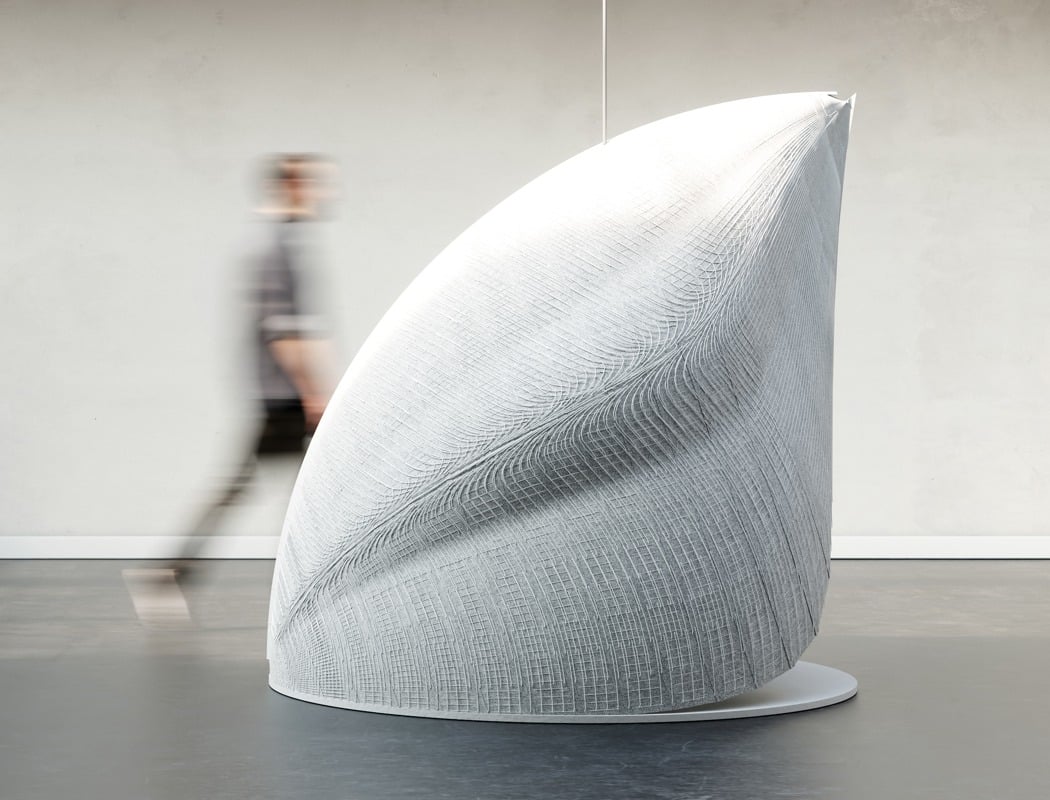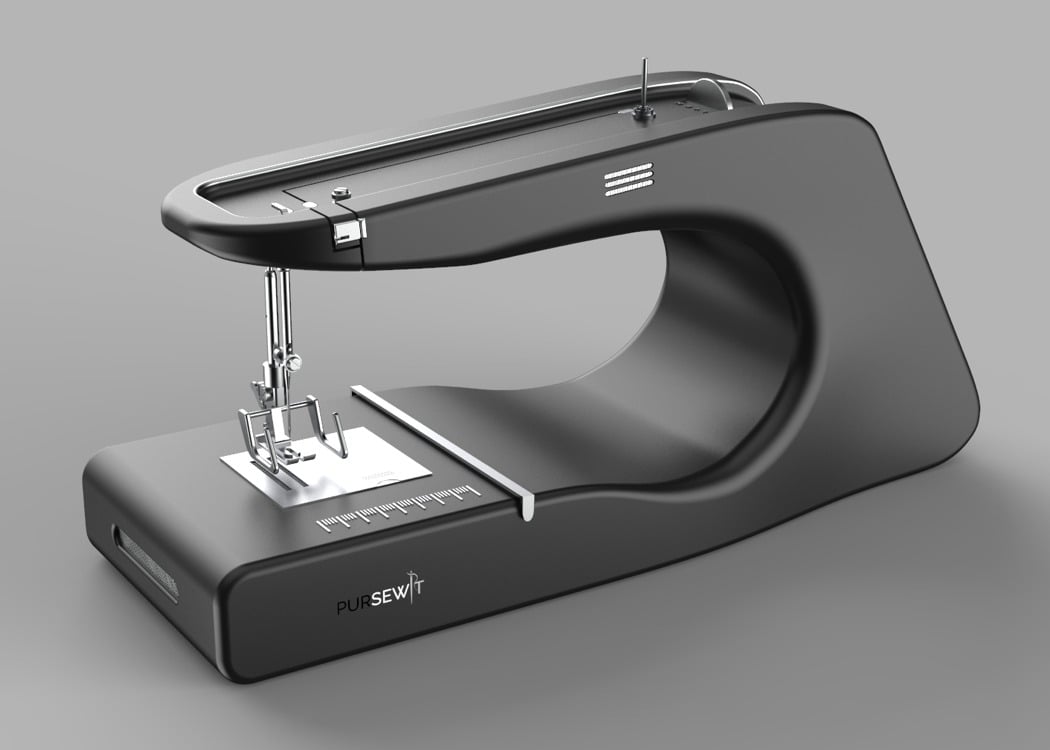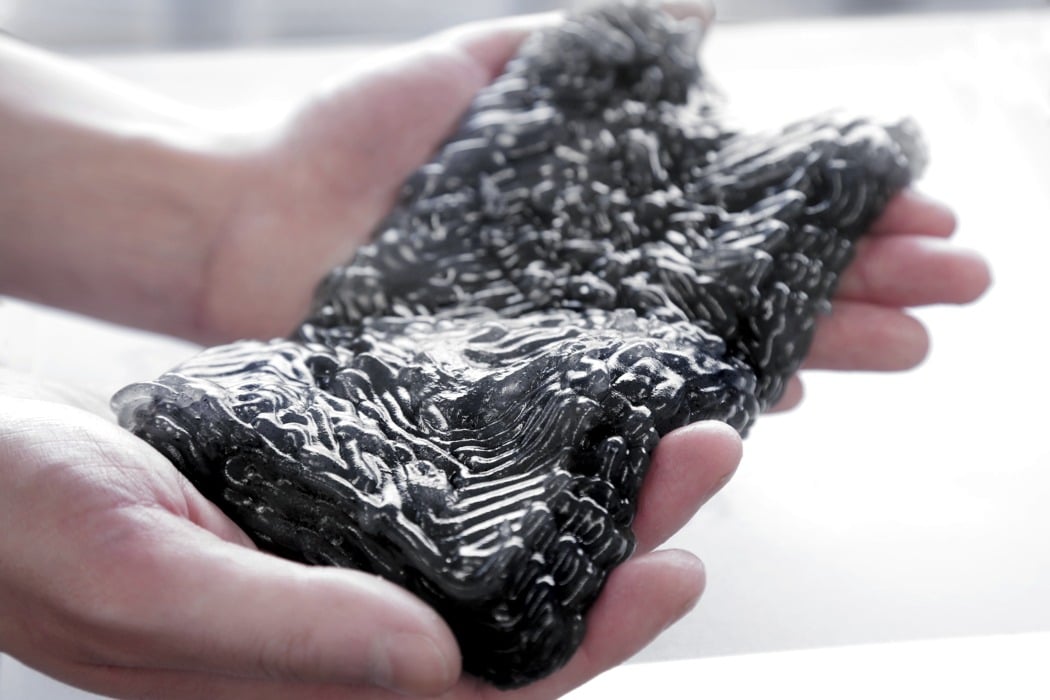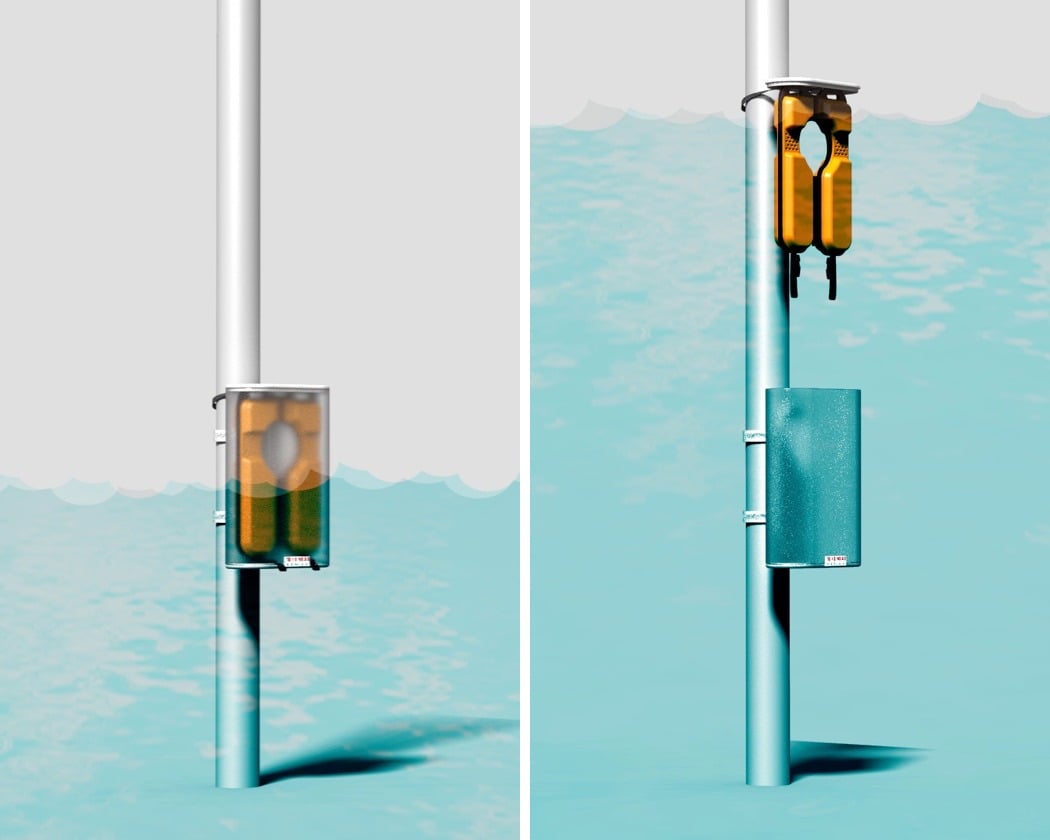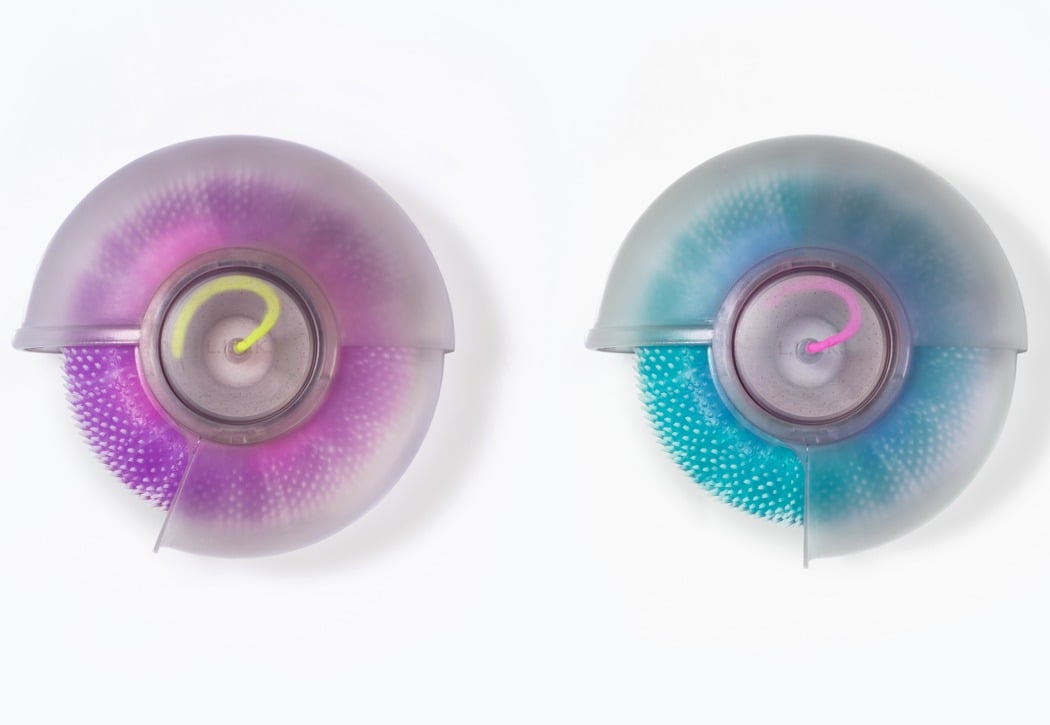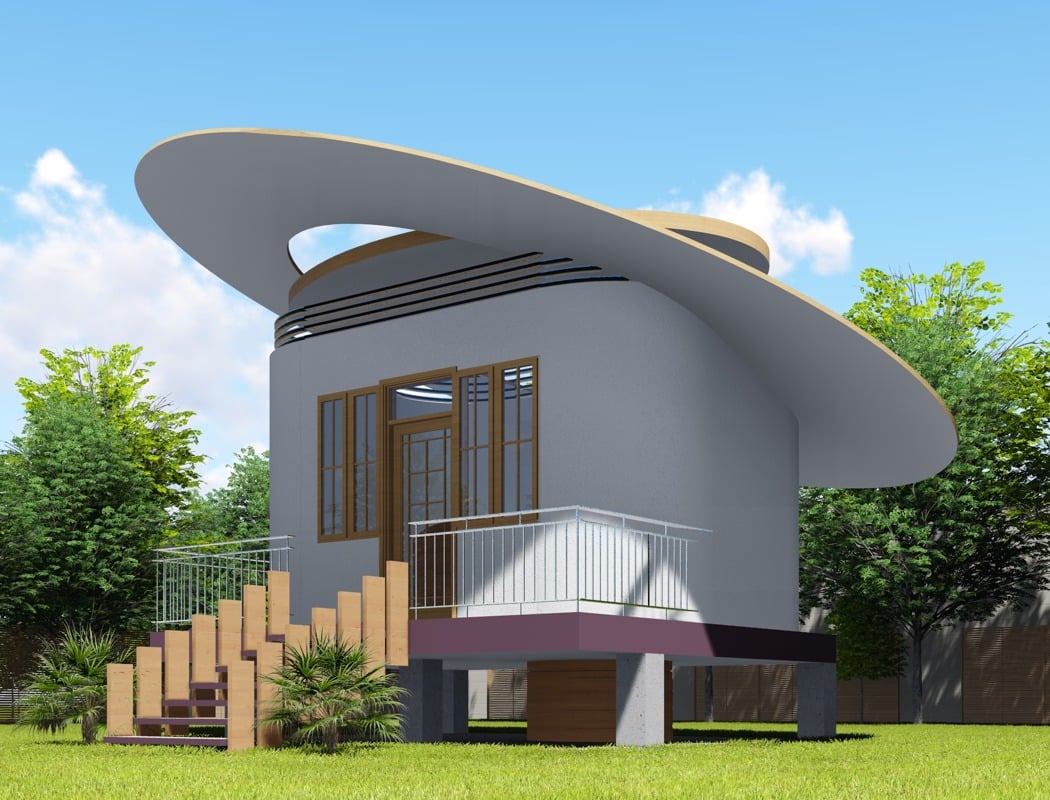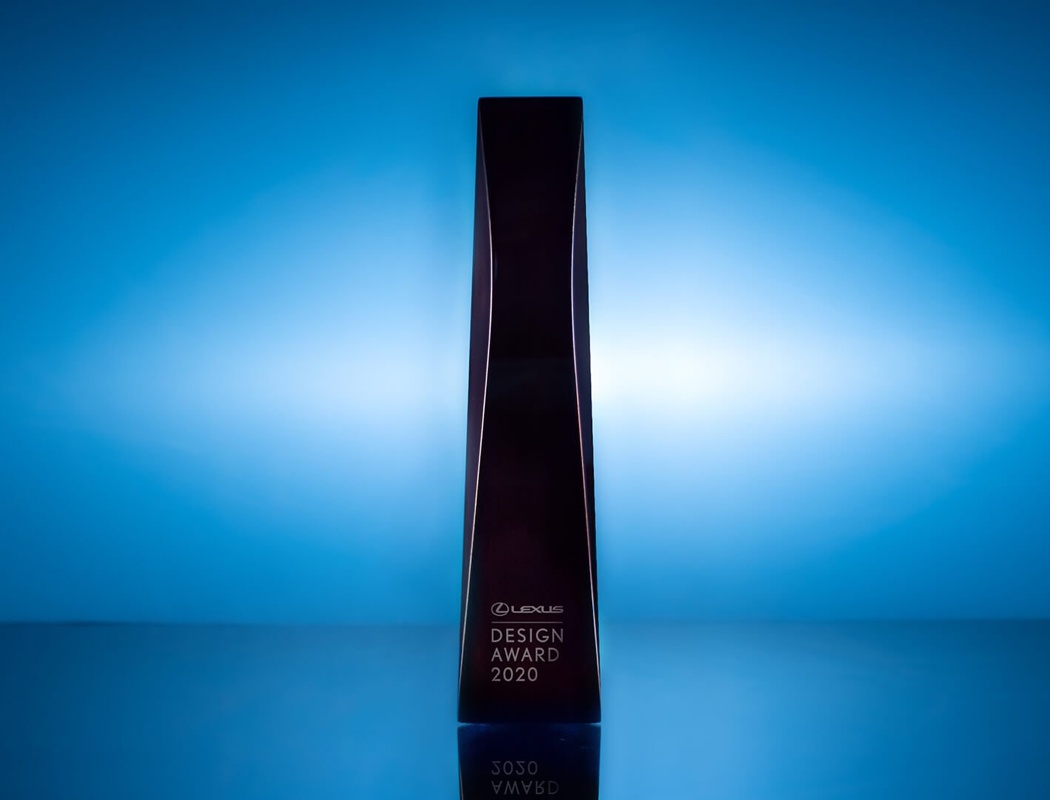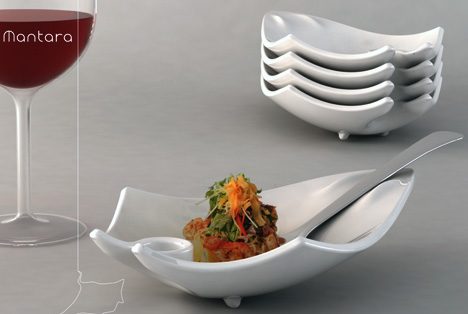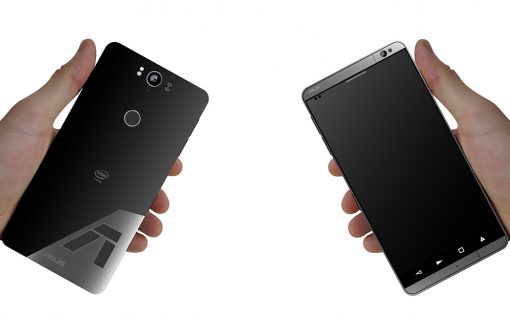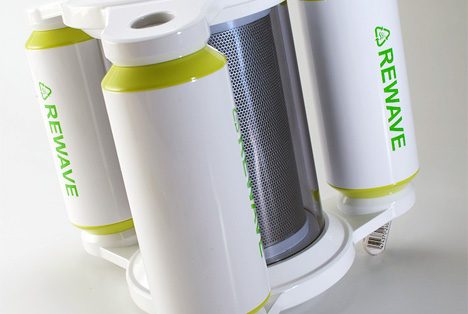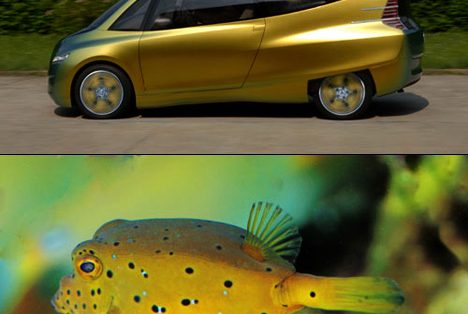The Lexus Design Awards are one of the world’s most uniquely structured design competition formats. Targeted around embracing new ideas that create a positive impact on the world, the Lexus Design Awards pride themselves on being a journey, rather than a process. This journey involves thousands of entries from around the world, 6 chosen finalists, 4 world-class design mentors, 4 elite judges, and a process that aims at nurturing and evolving the 6 design entries. The mentors, chosen for their expertise in their individual fields, guide participants through an intense 2-day Mentoring Workshop in New York City followed by one-on-one online sessions bringing their concept to its full potential. Lexus helps fund the production and prototyping expenses for all 6 finalist entries (to the tune of 3 million Yen), and a panel of elite judges choose a Grand Prix winner which will be announced on September 1st. This process is unique to the Lexus Design Award. Its mentoring system helps designers get critical exposure to the industry while getting the undivided attention of 4 industry-leading mentors. Yanko Design had the opportunity to speak to one of them – Joe Doucet, of the Brooklyn-based design studio Joe Doucet x Partners.
After exchanging pleasantries and asking each other how we were coping with the pandemic, we spoke in detail about the Lexus Design Award 2020, Joe’s involvement as a mentor, and what I expected would be a simple 20-30 minute interview went into nearly an 80-minute long conversation on the design profession, Joe’s approach to designing and mentoring, on awards in general, designer ethics, and whether AI could threaten the creative profession (short answer: Yes, AI can definitely replace designers. The ones that survive will be the ones that embrace AI as a tool to empower their design abilities). Here are a few excerpts from our conversation.
Yanko Design: Hey Joe! We’ve been long-time fans of your work (we even recently featured a futuristic face-shield you designed), but for the people who aren’t familiar with your work, do let our readers know a bit about you and what you do.
Joe Doucet: Hey! Thanks for this opportunity. I’m Joe Doucet, designer and founder of Joe Doucet x Partners, a design studio based out of Brooklyn, New York. We’re an award-winning design studio that handles a wide variety of projects spanning different categories. We pride ourselves in diving deep into understanding the product, the solution, and all ends of the process. JDxP works on a gamut of design solutions internally as well as in a consultary capacity for outside clients. We recently designed a luxury face shield that had the good fortune of being featured on your platform! A lot of companies have expressed interest in the design since the publication and we’re actually working on a product launch pretty soon! I’m also a mentor for the Lexus Design Awards, providing guidance to the finalists and helping them evolve their concepts and turn them into truly world-class design solutions.
YD: That sounds pretty cool! How did this mentorship opportunity materialize? What’s the mentorship process like?
JD: The people at Lexus Design Award were kind enough to approach me. What’s really unique about the Lexus Design Awards is the fact that you get to be mentored by a group of designers, rather than just having a jury panel look at your design and pass judgment on it. I’ve participated in my fair share of awards and been a jury on a few of them too, and there’s a mechanical process that isn’t true for LDA. The Lexus Design Award really embraces the idea of growing and nurturing designs that have the ability to impact the world. It all ties into the way Lexus values the power of design. The process starts with evaluating designs based on the kind of impact their underlying ideas have. These designs become a part of the finalists, and each final entry is individually coached by a set of mentors who help designers evolve their concepts into a proper, fleshed-out design solution. Finalists get the benefit of interacting with leaders in their field (I’m honored to be a part of this roster too), and having their evolved work then judged by stalwarts like John Maeda, Paola Antonelli, Jeanne Gang, and Simon Humphries. Given that only a few designs make it to the Grand Prix Selection round, the judges really spend a lot of time understanding and scrutinizing the designs before evaluating them.
YD: Not many people know this, but you switched from being a graphic designer to a multidisciplinary designer. What sort of expertise do you bring to the table when it comes to mentorship? Are the mentors selected based on a set of criteria?
JD: Haha! I’m surprised you know about me being a graphic design graduate! Well, ever since we started JDxP, I’ve always involved myself in every aspect of the process, so I don’t really limit myself just to one discipline. In fact, my area of expertise as a mentor for the Lexus Design Award is innovation. The Lexus team carefully curates their mentors to cover most aspects of the design world, so finalists get a different perspective from each mentor, and that way there’s never really a clash of advice or of interest. Each mentor provides their own facet of advice and growth so the process is truly holistic. There isn’t any other award program that approaches the judging process with this unique perspective. Lexus even provides financial assistance to help turn the concepts into proper prototypes. In the end, designers don’t just win an award, they really learn a lot along the way.
YD: Does that mean a lot of the participants are design learners, students, or young designers? In this process of mentoring do their designs often change drastically?
JD: Oh yes, the award program sees a healthy set of entries from design students and young designers in general. A lot of young designers find the mentorship angle really lucrative, and it’s a great way to take your design concept and incubate it. Besides, the competition doesn’t levy an entry fee and Lexus sponsors production and prototyping costs for the finalists, making it a great accelerator for design ideas. When we’re selecting the finalists, we usually look at the design’s impact rather than just superficially analyzing the design. This helps us decide which design entries have true potential to live up to the award brief… so yes, a lot of times the designs go through a dramatic makeover. Sometimes they’re purely conceptual, so in the process of making them real, the design does have to evolve and change. In the end, we retain the design’s intent and impact, but help evolve the solution into something better.
YD: A lot of designs we see (even some finalists of this year’s award) exist as concepts that ignore real-world constraints but hold promise in a much more feasible future. Is it important to only design products/services that can be realized in the immediate future? What are your thoughts on conceptual designs?
JD: This is something I hold dear to my heart. I truly believe concepts are a window into the future and there really is no future without concepts, so I definitely believe in the power of creating something that doesn’t or can’t exist. It’s what drives innovation! Concepts are a very important segment of the automotive industry too. Car companies use concepts as a tool to test features and gauge the market’s response towards them. Those concepts never see the light of day, but their role in the design process is extremely important. In fact, concepts are one of the reasons I love Yanko Design so much too because I believe you were probably the first blog to focus so heavily on concepts that showed promise. It’s remarkable that you guys still have such a heavy focus on conceptual designs. I disagree with the people who claim that designs should be rooted in reality because that’s a very one-dimensional way of approaching anything. When we see an award entry that’s conceptual, we always measure its impact and intent. The design goes through iterations thereafter.
YD: The Guiding Principle for Lexus Design Award is “Designing for a better tomorrow”. What are your thoughts on it? Is it a complicated process, navigating sustainability and making designs future-friendly?
JD: It’s perhaps the single most important call-to-action for every designer today. We as designers often don’t have that clarity that’s needed when we’re designing products that will enter the world and probably stay there for years or even centuries to come. It’s not about making better things, it’s about making things better. In fact, there was a study that was conducted close to 12-13 years ago that said 70-80% of the environmental impact of a product is determined in its design phase, so we as designers really have a responsibility to really think ahead about every aspect of what we make, how it affects people emotionally, how it affects production lines, what its afterlife is, what happens when it breaks, what happens when it needs to be replaced… oh it definitely is complicated to navigate, but that should never be a reason to overlook it.
YD: I couldn’t agree more. I’m reading “Ruined by Design” by Mike Monteiro and he mentioned how design is one of the most impactful professions without an ethical code. Doctors, lawyers, accountants, they all have a code of conduct. Even crime is more organized than design is! How do you navigate this responsibility in the professional world when a client needs something that goes against your beliefs?
JD: We refuse. If there’s a client that’s dead set on asking for a product that they know has a net negative impact on the world, and they’re fine with it, we don’t take them up. Eventually, it means one less bad product in this world, and that’s a good thing.
YD: Getting back to the Lexus Design Awards… The process of designing/mentoring obviously leads to a valuable exchange of ideas and information. Is there anything you’ve learned from your fellow mentors or from the 6 finalists?
JD: Oh absolutely! I’m always thrilled to see the kind of problems these designers are trying to solve. This young crop of designers has such a unique life-perspective too, it’s always great to interact with them to see their fresh take on the problems they’re looking at solving. It’s no secret that the younger generation is also more focused on sustainability and impact because it has consequences that will affect them in their lifetime, so that’s amazing too. I often find that they end up inspiring me too!
YD: Are there any design values that the Lexus organization brings to the table in this competition?
JD: I think the award’s theme speaks to this. “Designing for a better tomorrow” I believe is a value that’s inherent to Lexus, and that’s why they’re so incredibly invested in this new award format, where they bring mentors and judges to uplift designs and designers rather than just simply reward them. In their own way, they’re pushing for a better tomorrow too… and for such a massive multibillion-dollar company to embrace this agenda of nurturing good design and dedicate time, money, resources, and efforts towards it each year, it’s truly remarkable.
YD: Alright, Joe! This was wonderful! I’m honestly quite pumped to see that there’s a massive multibillion-dollar company out there that’s so invested in redeeming the design profession and actually doing something for the greater good! I hope our readers will be inspired enough to send in their designs too in the future! To wrap this interview up… If you had to explain your design process/mantra in a few words, what would they be?
JD: This was really great! Thanks for reaching out, it’s an honor to play my part as a mentor of the Lexus Design Awards. As for my design mantra, it’s something I’ve said earlier. It’s not about making better things, it’s about making things better!
Click Here to Know More About the Lexus Design Award 2020 Finalists competing for the Grand Prix that will be announced on September 1st, 2020.
The Lexus Design Award 2020 Finalists
Feltscape by Théophile Peju & Salvatore Cicero
Think of the Feltscape as an isolation chamber that imitates the feeling of being within a womb. Designed by UK-based Théophile Peju & Salvatore Cicero, the Feltscape is a ‘breathing cloud’ made of felt and recycled bio-plastic with an innovative robotic fabrication process. Equipped with sensors and kinetic mechanisms, the Feltscape can sense a user’s breathing patterns, allowing the isolation chamber’s smart membrane to react to its user’s breath. Creating a perfect atmosphere for reflection, meditation, and an escape from the immediate world, Feltscape provides a cocoon-like isolation experience that helps slowly and surely calm people down. Its organic design reflects inspiration from cocoons too!
Pursewit by Aqsa Ajmal
The Pursewit is uniquely positioned to help the visually impaired not just be independent, but also develop vocational skills that help them make a living. Designed by Pakistan-based designer, Aqsa Ajmal, after her friend lost her vision in an accident, the Pursewit makes sewing more accessible with a design that’s built around ease-of-use with an approach that’s immediately intuitive and with a relatively shallow learning curve. The design scales the form of the sewing machine down, making it less cumbersome while also being simpler and safer. Ajmal hopes that the Pursewit will go beyond just helping the visually impaired be more independent by sewing or fixing their clothes, by also allowing them to take on a skill set that helps them earn a daily wage and be financially independent too.
Biocraft by Sutherlin Santo
Biocraft attempts at transforming mundane objects into living ones that interact with the environment. Originally named Bio.Scales, the Biocraft is a revolutionary material that combines natural biopolymers with emerging technology to create a new material that possesses capabilities like being able to extract CO2 from the air, rid the ambient environment of pollutants, or even disseminate nutrients into the atmosphere. Created by Paul and Garrett Sutherlin Santo from Los Angeles, Biocraft hopes to eventually replace materials like thermoplastics, eventually creating regular products that don’t just exist to solve a problem, but rather serve a higher purpose by being ‘living entities’ that have a positive impact on human health and the environment.
Flash Pak by Yaokun Wu
Akin to having a fire-extinguisher mounted on the walls of buildings, Flash Pak by Yaokun Wu of China aims at providing flood-prone areas with instant access to life-jackets. Designed to be attached to lamp-poles in areas susceptible to flash floods, the FlashPak sits in its protective housing at regular times, but in the event of a flood, naturally rises to the surface thanks to the life-jacket’s innate buoyancy. Floods, now an unfortunately common by-product of climate change, displaces millions each year, resulting in thousands of deaths annually. Solutions like the Flash Pak can turn a lamp-post (or any regular post) into a potential life-saving zone, giving people instant access to life-saving jackets during times of need. New jackets can easily be placed back in their housing once the flood subsides, and the Flash Pak’s automatic deployment during a flash flood makes it an incredibly effective, life-changing solution.
L.I.C.K. by Irina Samoilova
A quirky example of biomimicry, the L.I.C.K. by Irina Samoilova from Russia is a portable body cleaner that takes inspiration from the way felines clean themselves. The L.I.C.K. is modeled on a cat’s tongue, with a soft cleaning surface with unique papillae that helps people who are unable to have a bath to clean themselves. Designed for people with no immediate access to water, or with injuries/bandages/casts that require being kept away from water, the L.I.C.K. provides a unique tactile experience that helps keep the body clean. Designed to work just the way a cat’s tongue does, the L.I.C.K. can simply be run across the body while its specially designed papillae and U-shaped cavities help lift dirt off the body (while feeling great to the touch too!)
Open Source Communities by BellTower
What if architecture, like software, could be open-sourced so that people can collectively develop something better together? The Open Source Communities, a Grand Prix finalist from Kenya-based BellTower, hopes to create universally available open-source home-design plans that can be used to design communities in developing and underdeveloped countries. These open-sourced homes can help provide a safe and secure haven for people in developing areas, while helping designers leverage the power of open-source planning to effectively allocate resources, allowing communities to even be sustainable, energy-efficient, and eco-friendly by design!
Click Here to Know More About the Lexus Design Award 2020 Finalists competing for the Grand Prix that will be announced on September 1st, 2020.

